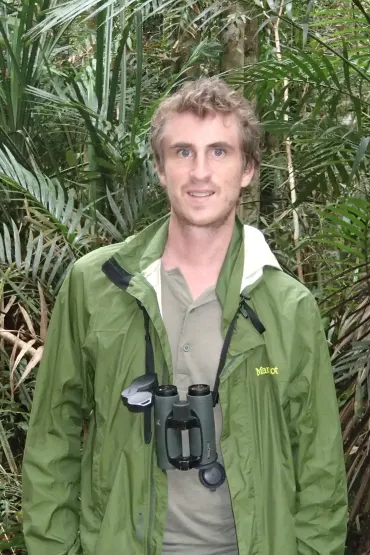Research project title
Conservation of a very rare species in a rapidly changing context: Cambodia’s Bengal Florican
Abstract
The Southeast Asian subspecies of Bengal Florican Houbaropsis bengalensis blandini, a Critically Endangered bustard, is one of the most threatened bird taxa in Southeast Asia. The only remaining population is located in the Tonle Sap Floodplain, Cambodia. This thesis consists of research that addresses the question of how can a species that is so poorly adapted to the modern world be saved from extinction in the context of a country undergoing rapid development and change? I first quantify the recent rapid population decline and show that Bengal Florican abandon sites when suitable habitat contracts to less than 25 km2. I show that conservation measures have stabilised the population at one small site, and I evaluate progress in research and management from that site, and from sites in India and Nepal that support florican populations, and use these to develop a framework for conservation collaboration across sites. I then build a case for immediate conservation action by showing that recent habitat changes in the Tonle Sap Floodplain due to agricultural intensification in Cambodia are greater than the predicted future impacts of climate-change and hydropower dams. However, because in situ conservation alone may be insufficient to save H. b. blandini, I apply the IUCN guidelines for captive management and use a decision tree to help stakeholders thoroughly consider the risks associated with ex situ conservation. Lastly, I draw on my experience of Bengal Florican conservation to propose a theory, called the law of small sites, to explain why small sites, such as those used by remaining floricans, are of high importance for conservation; I also explain why the nature of this explanation is important for the conservation of very rare species. I conclude by discussing my research in the context of how success in conservation of H. b. blandini could be conceptualised.
Research interests
Dr Simon Mahood graduated from the Research Institute for the Environment and Livelihoods (RIEL) under the supervision of Prof. Stephen Garnett. His research aimed to understand how the conservation of highly threatened species can be achieved against a backdrop of rapid economic growth and environmental change. Simon is a keen birder, so unsurprisingly his research interests primarily lie in understanding how we can prevent the extinction of threatened bird species, through reconciling the needs of conservation and development. Simon spends much of his time in Cambodia, where he now works for the Wildlife Conservation Society (WCS). He has previously worked for BirdLife International and Fauna and Flora International in the United Kingdom and Vietnam. Simon holds an Honours in Ecology and an MSc in Ecology and Conservation from the University of East Anglia, United Kingdom.
